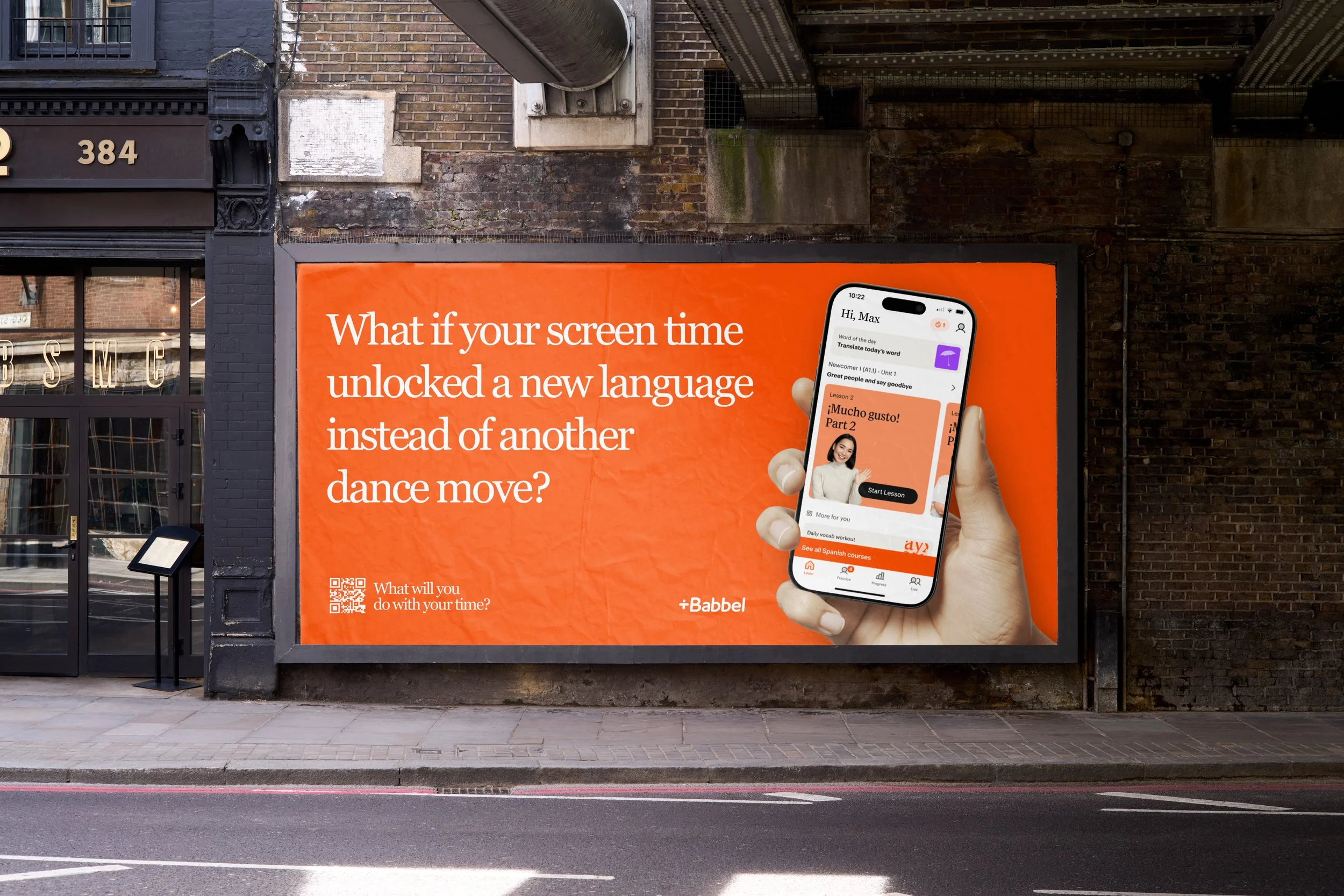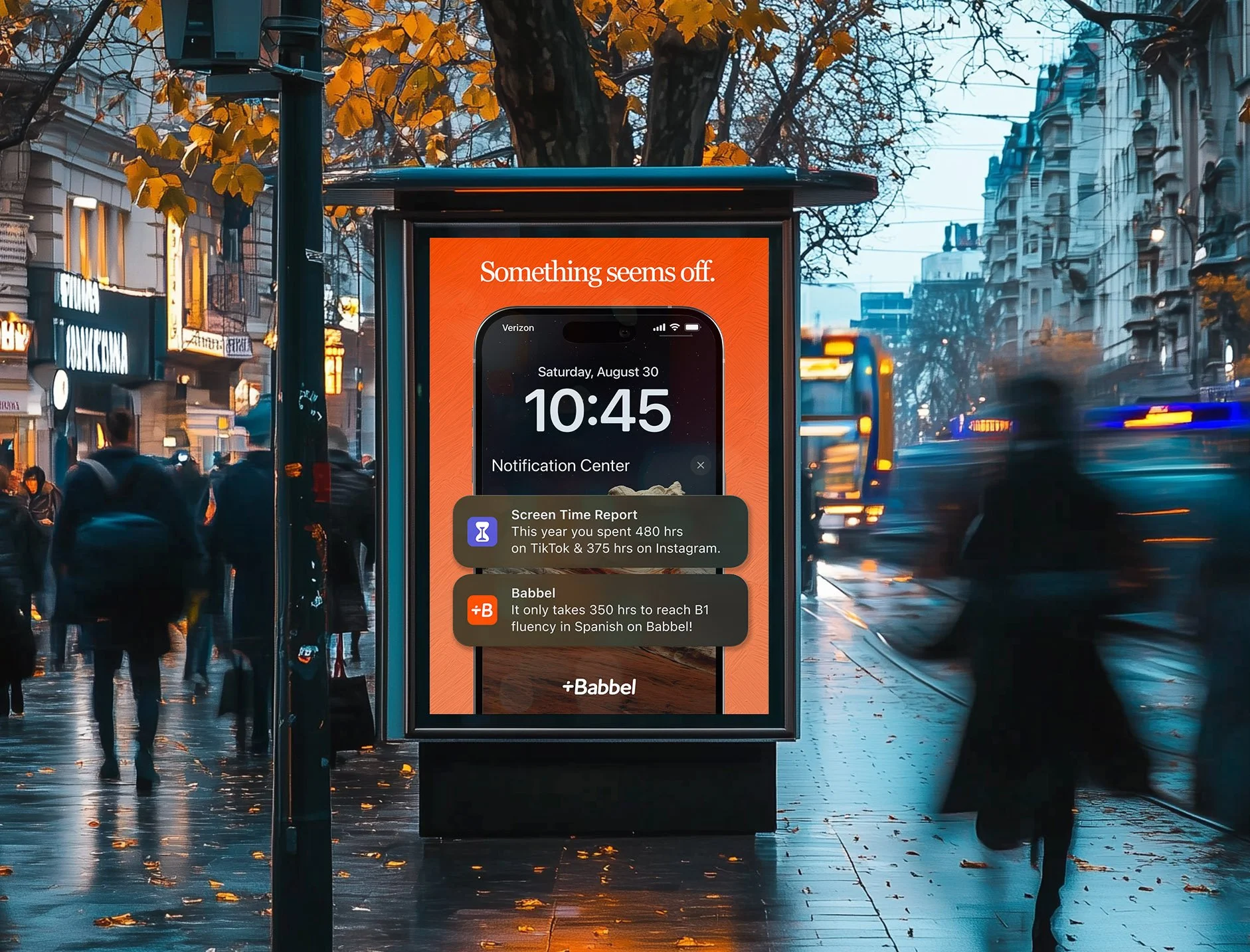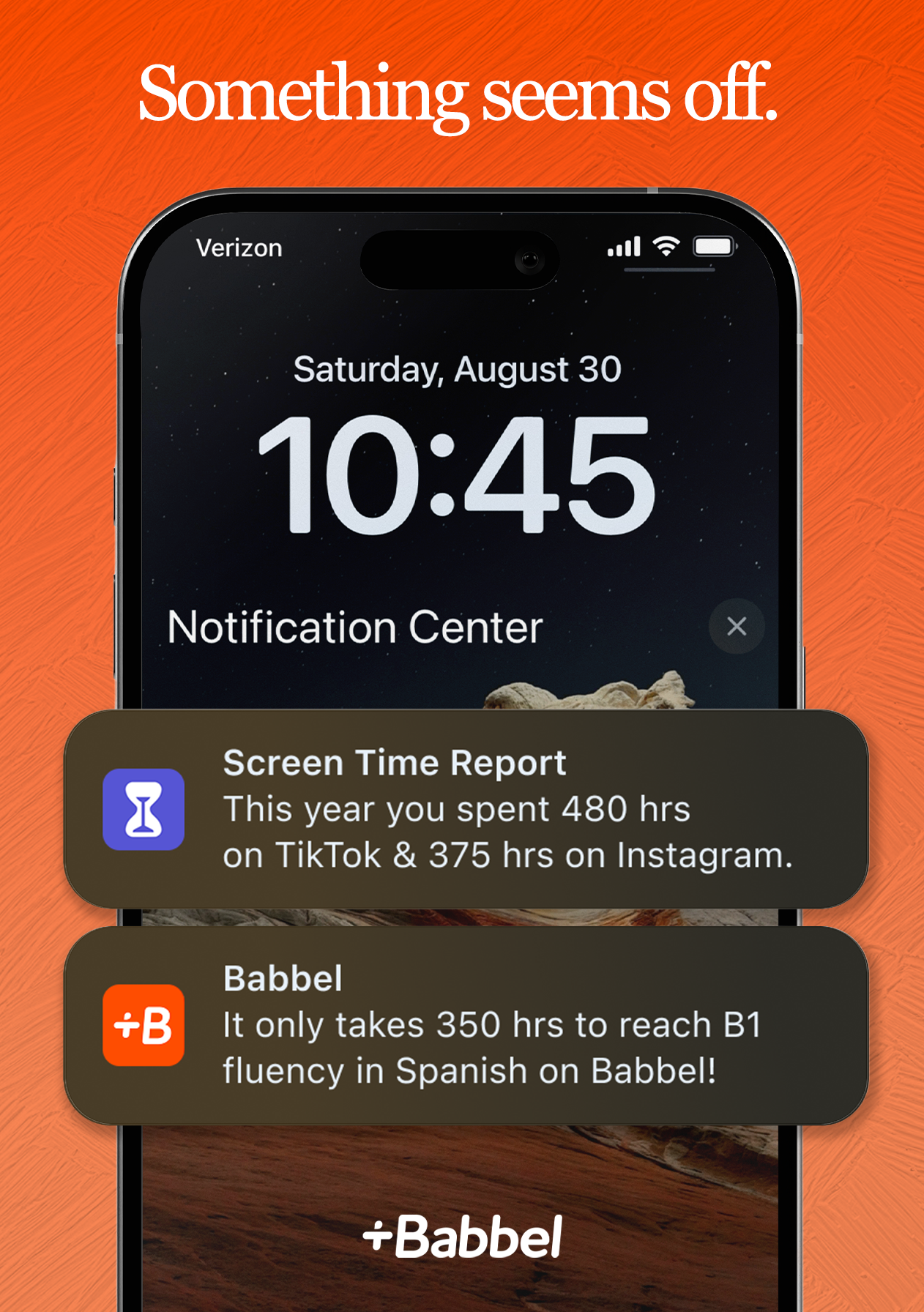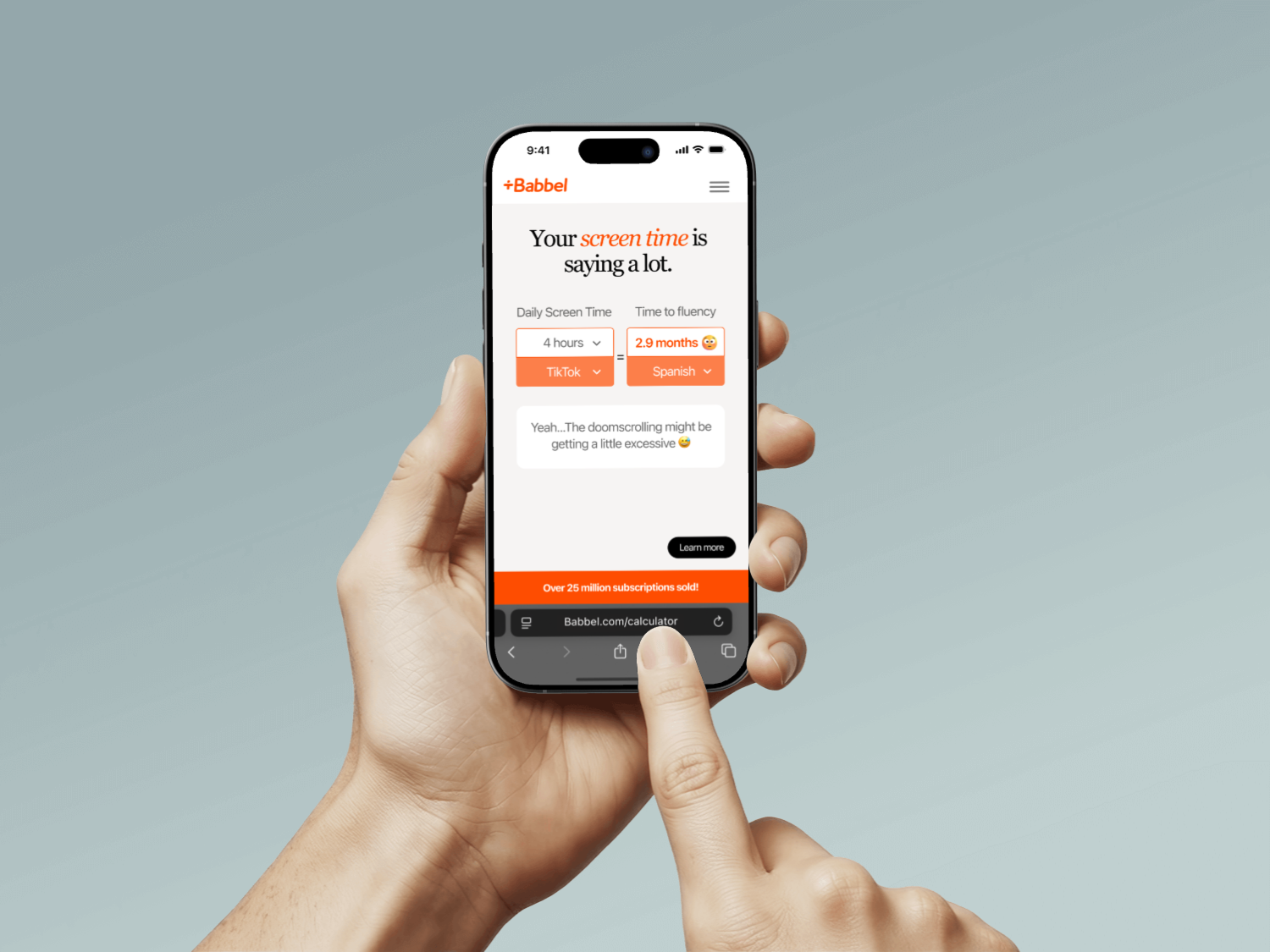-
Babbel aims to engage Gen Z and Gen Alpha, audiences drawn to more gamified competitors like Duolingo, by reframing itself as an effective language-learning tool that feels both credible and approachable.
-
The average Gen Z spends 48 days a year on TikTok. It takes just 15 days to reach language proficiency on Babbel.
Gen Z knows they scroll too much, but time online doesn’t feel long. The immediacy of short-form content makes hours vanish, and only when confronted with the number do they realize how much they’ve lost.
-
OOH: Billboards and posters reveal what your screen time could equal in Babbel progress.
Digital Activation: An interactive site converts your daily screen time into how long it would take to learn a language.
BABBEL
Role: Art Director | Copy Writer
Activation - What is your screen time saying?









